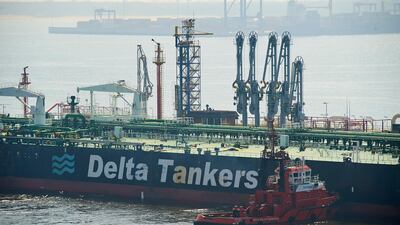Oil prices could climb as high as $80 per barrel by the third quarter of the year, with Iran’s exports falling to as low as 300,000 barrels per day following the removal of sanctions waivers to Tehran’s oil clients, according to analysts.
"With the current situation, we still have to work out our price forecast, but we expect $80 or more for the next quarter or the third," Iman Nasseri, managing director at Facts Global Energy told The National. Most of the "pressure in the market in terms of supply demand balance is in the third quarter, that's when demand will peak and supply will drop because of maintenance and seasonal issues."
In a less likely scenario, prices could climb even higher to $85 per barrel, if Opec+, as the alliance undertaking 1.2 million bpd of production cuts is known, continues output restrictions, he added.
The US on Monday cancelled waivers to eight nations that had continued to import crude and condensate from Iran following the imposition of sanctions in November last year. The US said it had reached an agreement with top Opec producer Saudi Arabia as well as the UAE to replace Iranian barrels. The two producers are part of a pact to remove 1.2 million bpd off the markets since the beginning of the year in a bid to bolster prices that plunged at the end of 2018 after reaching three-year highs of $86 per barrel in October.
Iran exported 1.1 million bpd on average during the first five months since November when the sanctions kicked in. Its exports for last month were estimated to have been around 1.3 million bpd to 1.4 million bpd, "depending on grey areas", said Mr Nasseri. With nearly a million bpd expected to leave the market, the onus is on top producers within Opec led by Saudi Arabia to meet this supply gap.
On Monday Riyadh said it would co-operate with fellow producers to ensure markets are adequately supplied and remain balanced. Prices peaked to $74 per barrel on Monday after the US announcement on revoking of waivers.
Saudi Arabia and allies are expected to “cautiously react to customers needs rather than pre-emptively ramp up production,” observed Giovanni Staunovo, commodity analyst at UBS.
“Thanks to over-compliance to the production cut deal, the Saudis and its allies still have buffers to offset a decline in Iranian exports. As such, we expect the Opec+ compliance rate to decline again from May onwards,” he said.
The Swiss bank estimates Brent to trade in the range of $70 to $80 this quarter on the back of improving oil demand and further tightening of the market.
Others such as Citi have estimated Brent to trade above $78 over the second and third quarter, while investment bank Goldman Sachs has maintained its outlook for the benchmark at $70 to $75 per barrel for the second quarter.
Opec’s technical committee is set to meet in the Saudi Red Sea city of Jeddah next month, where it is likely to review its compliance with the production curbs, which the alliance had agreed to adhere to for six months starting January.
The group is also set for a meeting in June in Vienna, where the current pact would be up for review.
Opec's de-facto leader Saudi Arabia would have to make it clear before the Vienna meeting that it is not locked into any deal with the US, said Ellen R Wald, president, Transversal Consulting and author of Saudi Inc.
FGE’s Nasseri however noted that the alliance is likely to hit a “no deal” now that both Saudi Arabia and the UAE have been publicly acknowledged to have worked with the US to increase supply to the oil markets.


